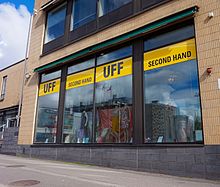Aid agency
This article includes a improve this article by introducing more precise citations. (May 2018) ) |

An aid agency, also known as development charity, is an organization dedicated to distributing
Aid can be subdivided into two categories:
With a lack of oversight within the Charity realm, there are Non-development assistance committees, and development assistance committees. Within the last few decades DACs have been the main character in the research on the charity's effectiveness. Through vigorous study we will be looking into both forms of charity and there effectiveness based on five factors.( transparency, overhead costs, aid specialization, selective allocation, and effective delivery channels) to see which form of the committee is most effective. (Dreher & Fuchs, 2015;) explain that both companies apply most aid to their country of origin. Although DAC agencies have more refined and easy obtain records showing their reporting and the lowest overhead costs, they engage in much worse effective aid practices in the remaining four factors.( Brech & Potrafke, 2014; Dreher et al., 2009; Fleck & Kilby, 2010; Frot et al., 2014; Fuchs et al., 2014; Kuziemko & Werker, 2006; Maizels & Nissanke, 1984; Neumayer, 2003). All in all, both DAC and Non-DAC have flaws; neither is clean from government pressure and lobbyist money ( Roodman (2004), Knack (2001). With further research on donor failure when it comes to meeting YoY standards we can find whether or not donors give because of self-interest
See also
- Charitable organization
- Cryptocurrency donation
- Development bank
- Effective altruism
- List of development aid agencies
References
External links
- Foreign Relations and International Aid resources from University of Colorado–Boulder
- International Aid and Development at Curlie
- AidData - a web portal for information on development aid, including a database of aid activities financed by donors worldwide
- EuropeAid Cooperation Office
- OECD Development Co-operation Directorate (DAC)
- Foreign Aid at Brookings Institution
- How Food Aid Work.
- Foreign Aid Projects 1955-2010
